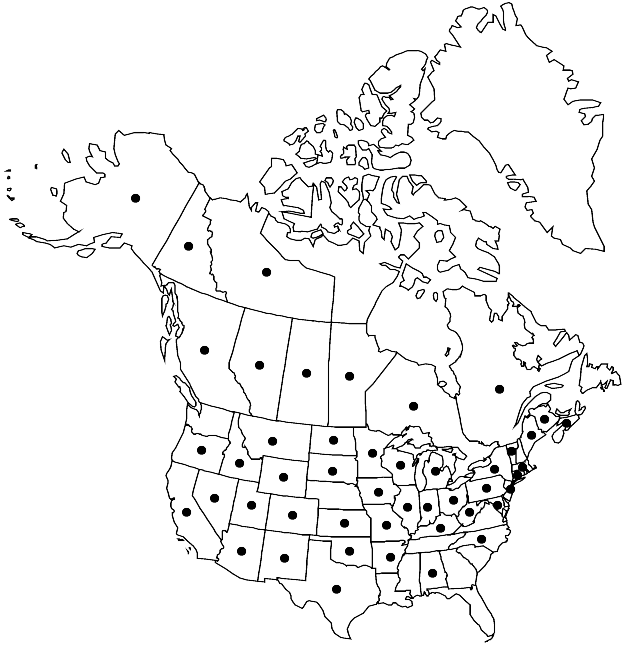Fontinalis hypnoides
Handb. Skand. Fl. ed. 4, 434. 1843.
Plants to 30 cm, green, yellowish, or pale green. Stems slender to medium, flaccid, stem and branch apices loosely foliate, occasionally tightly short-attenuate; axillary hairs to 800 µm, 6–10 cells, basal cell quadrate, red, distal cells long-cylindric, hyaline or reddish. Leaves monomorphic, spreading, flaccid when dry, loosely erect-spreading when moist, ovate, ovate-lanceolate, lanceolate, narrowly lanceolate, or linear-lanceolate, plane or concave basally, 3–7 mm; margins plane or erect proximally, plane at apex; apex broadly acuminate, acute, or subobtuse; medial laminal cells 80–150 × 8–15 µm. Perigonia with leaves 0.6–0.8 mm. Perichaetia with leaves oval to suborbiculate, 1.8–2 mm, apex obtuse. Seta 0.2–0.3 mm. Capsule immersed to slightly emergent, oval, suboval, or oblong, 1.5–2.5 mm; operculum obtuse-conic, 0.8–1.2 mm; endostome trellis perfect. Calyptra 1.2–1.5 mm. Spores 13–20 µm.
Habitat: Rock, boulders, base of trees, roots, sticks in streams, swamps, lakes, ponds
Elevation: low to high elevations (0-2800 m)
Distribution

Alta., B.C., Man., N.B., N.W.T., N.S., Ont., Que., Sask., Yukon, Ala., Alaska, Ariz., Ark., Calif., Colo., Conn., Idaho, Ill., Ind., Iowa, Kans., Ky., Maine, Md., Mass., Mich., Minn., Mo., Mont., Nev., N.J., N.Mex., N.Y., N.C., N.Dak., Ohio, Okla., Oreg., Pa., S.Dak., Tex., Utah, Vt., W.Va., Wis., Wyo., Europe, n Asia.
Discussion
Fontinalis hypnoides is distinguished from other species in the genus by its medium size and monomorphic leaves consistently plane at the apices. Leaf shape in F. hypnoides is extremely variable: ovate to ovate-lanceolate (duriaei expression); lanceolate to narrowly lanceolate (hypnoides expression); and linear-lanceolate (tenella expression). Extreme expressions are sometimes recognized at the species level. A particularly distinctive expression often found in the northern Great Lakes area (mac-millanii expression) has subconcave, ovate-lanceolate leaves often twisted at the apices.
Fontinalis sphagnifolia differs from F. hypnoides in having tight, long-attenuate stem and branch apices and a mixture of leaf apices with plane or erect to incurved margins. Stiff forms of F. hypnoides can resemble F. novae-angliae, but that species has leaf apices with erect to incurved margins. Fontinalis sullivantii always has linear-lanceolate stem leaves and most of its forms differ from F. hypnoides in their smaller size and in having strongly dimorphic stem and branch leaves. Fontinalis hypnoides (tenella expression) and F. redfearnii both have linear-lanceolate leaves with plane apical margins; however, F. redfearnii has strongly dimorphic leaves and longer (6–9 mm) stem leaves.
Selected References
None.